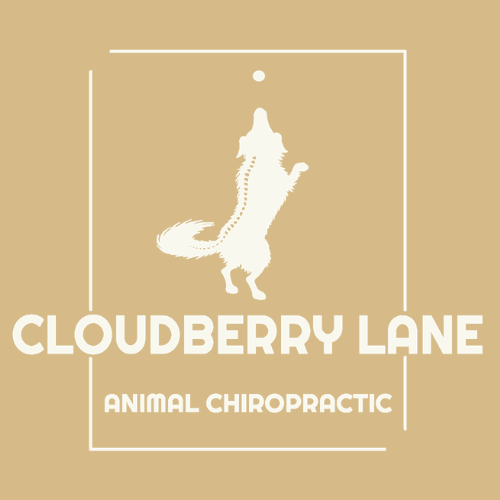Some of the most recent advances in animal rehabilitation have been made in the field of fascial release. Thomas Myers is credited with mapping the fascial lines of the human body which he documented in his book Anatomy Trains. In 2014 Dr. Elbrønd and Dr. Schultz made similar revolutionary discoveries in horses and dogs. Fascia has become the new frontier of anatomical research. Long overlooked, fascia is finally being recognized for its vital role in rehabilitation and overall health of an animal.
Fascia is connective tissue much like tendons or ligaments. It surrounds every muscle and organ in the body. Think of a thin, tough fibrous bag that allows for a tremendous amount of glide between muscles and organs. Fascia is laid out in all 3 dimensional directions. When injured it tightens up and can scar. Because it is 3 dimensional and moveable, a centimeter scar on the skin may actually extend for inches in all directions below the surface.
In school we are taught anatomy in the classic way by memorizing origins and insertions of muscles. In a classic model, tendons anchor muscles to bone in a single location. However in a fascial model, tendons do not insert into bone. Rather they insert into fascia with anywhere between 15% and 85% of the fibers extending past the designated insertion point (Lundquist, 2019). This fascial apparatus connects the entire body and provides a blueprint to understanding patterns of spinal misalignments (subluxations), tension and arthritis in the body through its interconnectedness.
Fascial lines are part of the greater connective tissue apparatus that joins together the entire body. It contains an incredible amount of nerve endings that signal to the brain any time the animal moves. Dispersed throughout the fascia are touch receptors. Imagine you are jumping on a trampoline and there is a glass of water sitting on the edge of the trampoline opposite to you. When you jump, that glass of water is going to bounce even though you did not directly touch it. This is how fascia works too, fascia is the trampoline, you jumping is sending signals along the trampoline to the glass of water which represents the brain. This is how the brain knows everything that is happening in the body and why trauma to an area requires neurological rehabilitation from a chiropractor. In the meantime here are some techniques you can try at home.
The three main types of receptors found in fascia are free nerve endings, Pacini corpuscles, and Ruffini receptors and each one has a different purpose that can be utilized in the rehabilitation of your pet (Coren, 2019). Free nerve endings make up the largest percentage of receptors in the fascia. They feed information to the Insula of the brain, resulting in pain relief. To activate these receptors for pain relief the stroke used is called feathering and consists of very light, broad, fast strokes (Coren, 2019). This technique is used over an area far from the painful spot. This leads to pain relief without bringing the brain's attention to the painful tissue. Use a feathering stroke in all directions for maximal pain relief.
Pacini corpuscles are used to improve the animal’s balance and movement symmetry. These receptors respond quickly to pressure changes and so the technique used is a quick, gentle, vibrating stroke. This is done in all directions on the skin. If you can pinpoint the area that is causing issues then this technique can be done directly over that location. If you are unsure which area to focus on then a general rule of thumb is to use it over the top of the hips for back leg issues, over the low neck for leg issues and behind the ears for overall incoordination.
Ruffini receptors are slow responding receptors and when activated they decrease tension. Steady, deep pressure is used to relax the area and increase glide of fascial layers over one another. This should be done in all directions over tight muscles or areas that stress is stored (Coren, 2019). The best areas to focus on are often the shoulders or withers and the butt or hamstrings of your pet.
Fascial release can accomplish many different outcomes. It can decrease pain before an adjustment or increase the effectiveness of rehabilitation post adjustment. This is a safe, pain-free modality to use on pets since the purpose is to influence the nervous system. Fascia is now being understood to be the largest sensory rich organ in the body (Coren, 2019). It plays a tremendous role in the health of an animal and I encourage everyone to try it at home.
References
Lundquist D. Analysis and Treatment of Equine Fascial Lines. American Veterinary Chiropractic Association 2019 Annual Conference. 2019Nov8;:138–49.
Elbrønd V, Schultz R. Myofascial Kinetic Lines in Horses. Equine Veterinary Journal [Internet]. 2014 [cited 2020Jan20];46:40–. Available from: https://beva.onlinelibrary.wiley.com/doi/abs/10.1111/evj.12267_121
Coren W.Improving Canine Mobility Using IASTM Techniques. American Veterinary Chiropractic Association 2019 Annual Conference. 2019Nov8;:21-27.

